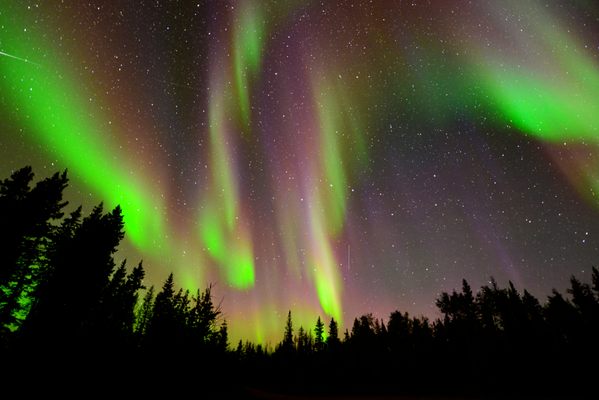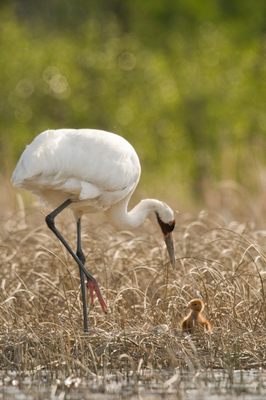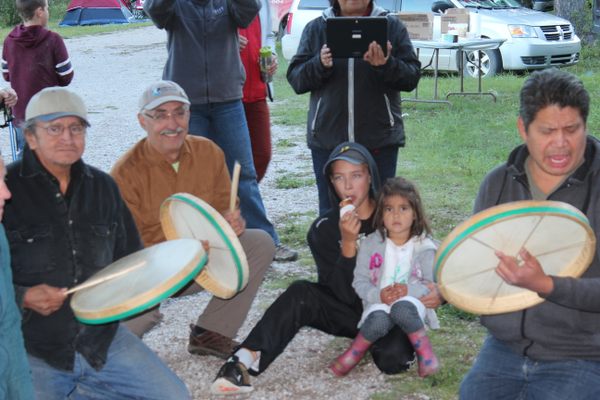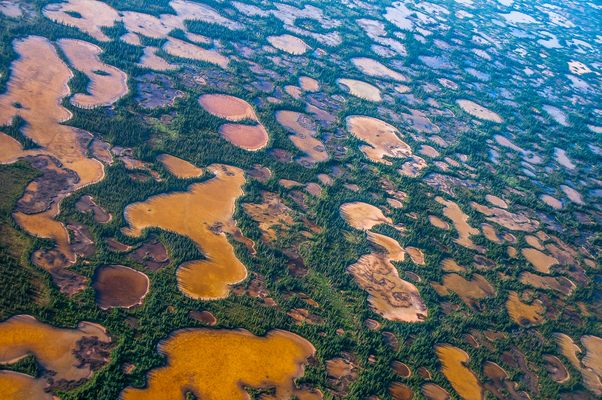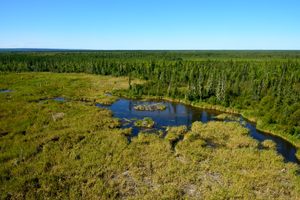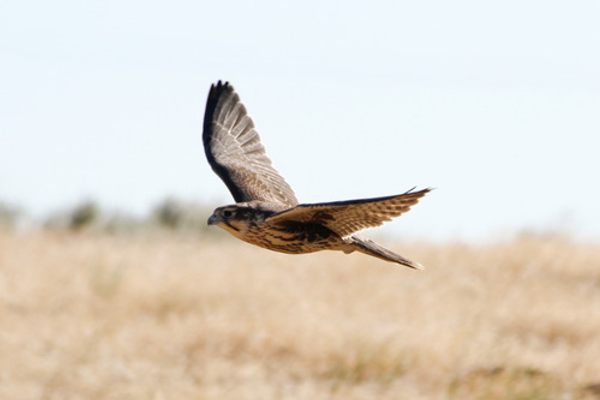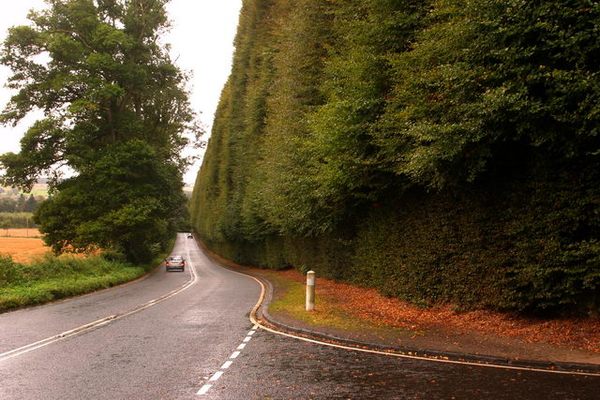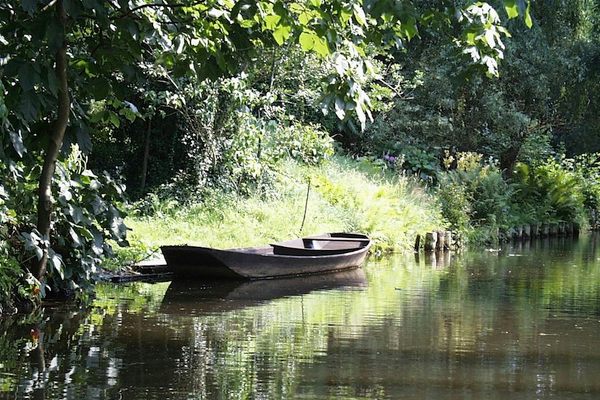About
Established in 1922, Canada's Wood Buffalo National Park is considered an excellent example of a successful, yet ongoing battle to save several species - both plant and animal - around us. The park comprises some of the largest segments of undisturbed grass and sedge meadows on the entire North American continent. It's critical that the grass be left undisturbed as it sustains the largest remaining herd of wood bison, a threatened species. It is estimated that the world's population of wood bison dropped from 40 million in 1830 to less than 1,000 in 1900. (There were only 23 in Yellowstone at this time.)
The park is also used by many different birds as a place of rest along their migratory routes. The area is the only breeding habitat left in the world for the whooping crane, another endangered species. The cranes breed on the park's salt plains, one of four distinct regions within the vast boundaries. The bird, imposing at more than 5 feet tall with black-tipped wings, was down to 15 known individuals in 1941. By 1994, their numbers had climbed to 133. In Wood Buffalo, the whooping crane shares space with geese, sandhill cranes, swans, ducks, white pelicans, bald eagles, peregrine falcons, and many other species of birds that migrate north across the continent.
Another attraction that the park, a UNESCO World Heritage Site as well as the largest park in all of Canada, boasts is the largest inland delta in the world, situated at the mouth of the Peace and Athabasca rivers.
The park is known for promoting a long-standing tradition of native subsistence. There are a number of people who live, hunt and fish inside of the park's boundaries, but their activities are considered sustainable. Evidence of artifacts of instruments suggest man has lived in the area for around 9,000 years, though Europeans didn't arrive until the 18th century when searching for a Northwest Passage.
Related Tags
Know Before You Go
The park isn't that easy to visit, but it is connected to the rest of the world by road. To get there you have to drive around the park to the community of Fort Smith, which sits on the border of Alberta and NWT. It is highly recommended to take a flightseeing tour over the park as most of it is inaccessible by car or even by foot.
Community Contributors
Added By
Published
November 28, 2010
Sources
- Wikipedia: Wood Buffalo National Park: http://en.wikipedia.org/wiki/Wood_Buffalo_National_Park
- Parks Canada: Wood Buffalo National Park of Canada: http://www.pc.gc.ca/pn-np/nt/woodbuffalo/index.aspx
- Great Canadian Parks: Wood Buffalo National Park: http://www.greatcanadianparks.com/alberta/woodbufnp/index.htm
- UNESCO: World Heritage Convention: Wood Buffalo National Park: http://whc.unesco.org/en/list/256
- https://everything-everywhere.com/north-american-national-park-31-wood-buffalo-albertanorthwest-territories/
